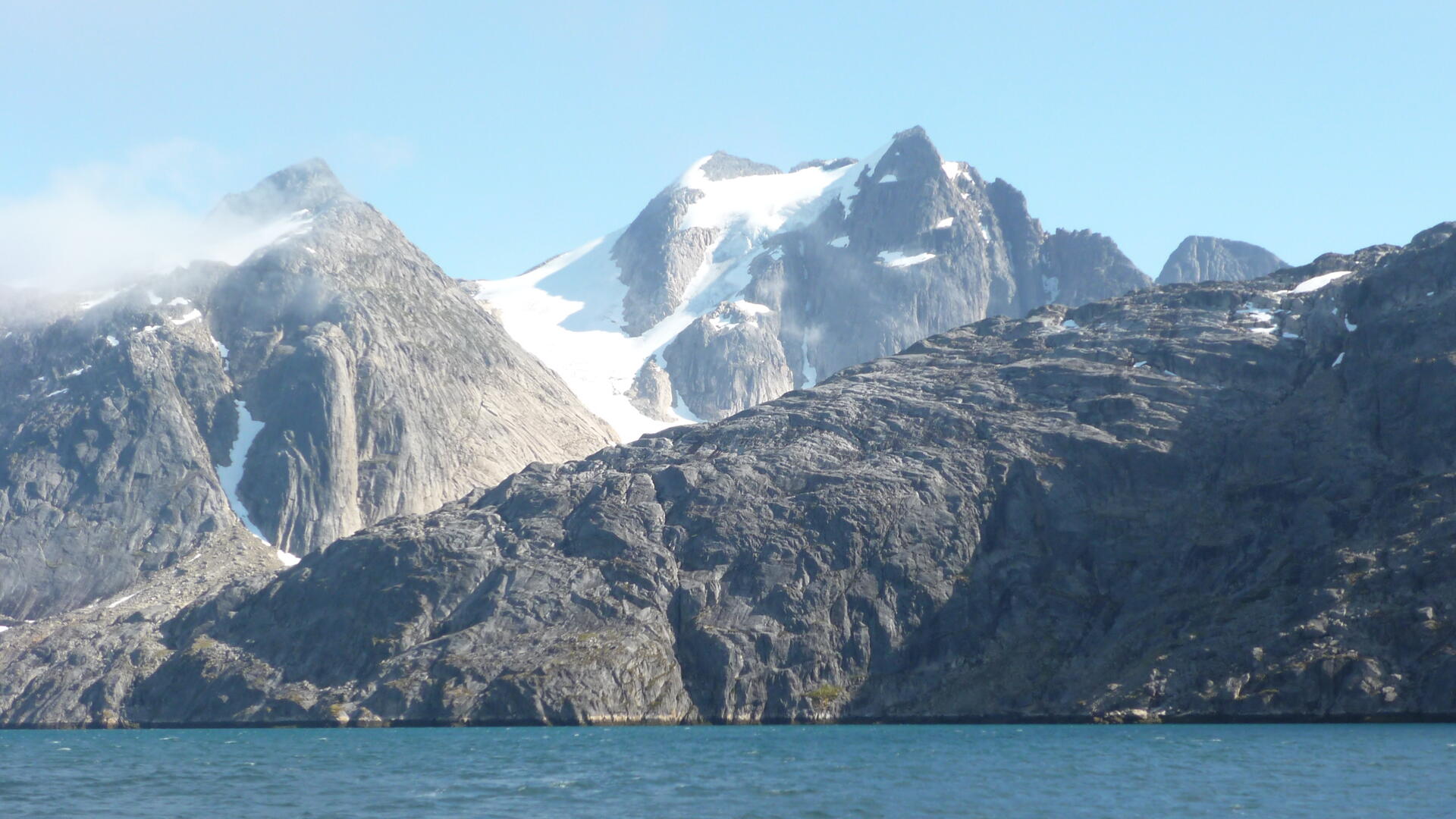World's oldest meteor crater isn't what it seems
New controversial claim suggests it's not a meteor crater at all.

The world's oldest meteor impact crater is not a crater at all, say scientists of a new study suggesting natural forces put the giant indent into Earth's surface. But the jury is still out.
The wannabe crater, known locally as the Maniitsoq structure, is located 34 miles (55 kilometers) southeast of the town of Maniitsoq in Greenland. The structure is around 62 miles (100 km) in diameter and formed around 3 billion years ago, although its origin has been disputed in recent years.
In 2012, geologist Adam Garde, of the Geological Survey of Denmark and Greenland, and colleagues said they had found evidence that the Maniitsoq structure was created by a meteor impact, calling it the earliest known example of its kind on Earth. However, a new study calls into question the 2012 team's findings.
Related: Crash! 10 biggest impact craters on Earth
"After an extensive investigation of the Maniitsoq region, we have not yet found evidence of microscopic shock deformation that is found in nearly all other impact craters," lead author Chris Yakymchuk, a geologist at the University of Waterloo in Canada, told Live Science. "Our data indicate that the structure in the region is the product of ancient plate tectonic movement, deformation and heating over hundreds of millions of years."
However, Garde said he is not convinced.

Not an impact crater?
Garde and his colleagues concluded the Maniitsoq structure is an impact crater mainly due to the structure of rocks at its center, they wrote in 2012 in the journal Earth and Planetary Science Letters. The researchers said that the depth of those rocks and the way they had been forced into the ground could be explained only by the impact of a meteorite.
Sign up for the Live Science daily newsletter now
Get the world’s most fascinating discoveries delivered straight to your inbox.
"With the data they had at the time, an impact origin was plausible," Yakymchuk said. "Our goal was to test the impact hypothesis using more data collected with a wider array of techniques."
Other studies had already shed some doubt on the 2012 findings, but Yakymchuk said he and his team arrived with an "open mind" about the structure's origin when they started their research in 2016.
Their main evidence against an impact origin comes from an analysis of zircon crystals — extremely durable and minute structures made up of zirconium silicate. The team analyzed more than 5,000 of these mineral grains and didn't find any evidence — such as fractures within the crystals — of them being damaged by a powerful impact.
"Zircon crystals are microscopic time capsules that can capture the damage produced from shock waves generated during a meteorite impact," Yakymchuk said. "We did not find any damage that indicated ancient shock waves passed through these minerals."
Recently, scientists have used these crystals to show that Earth's crust grew rapidly at around the same time the Maniitsoq structure was formed, Live Science previously reported. This kind of tectonic growth spurt likely created the Maniitsoq structure, the researchers said.
Yakymchuk's team also found a different age for the structure.
"When we started to combine some field observations with data on the age of specific rock units, it started to point us away from an impact crater origin," Yakymchuk said. "The age we retrieved was 40 million years younger than the proposed age of impact."
Contrasting views
The new findings highlight the need to continually challenge previous studies, which is an important part of the scientific process, Yakymchuk said. "As we develop new scientific techniques and technologies, we are always testing previous hypotheses."
However, the authors of the 2012 study argue the new paper doesn't tell the whole story.
"The most obvious single feature of the Maniitsoq structure that requires an extraterrestrial impact is the central part of the structure," Garde, lead author of the 2012 study, told Live Science. "I would be happy to change my interpretation, but I would first of all need to see a convincing alternative physical explanation."
Natural geological processes aren't enough to explain the formation of the structure, especially in the central regions where rocks appear to have been put under a tremendous amount of force, Garde said.
"Our observations are not discussed in the new study, although they are of fundamental importance," Garde said.
He also doesn't think that zircon crystals can tell the whole story because no other proposed impact craters are this old, meaning the evidence for a past impact might have been wiped away by geological processes over the eons. Other studies have also shown that zircon crystals can get damaged on the surface without any visible damage within the crystals, Garde said.
"Yakymchuk et al. have not studied the exterior surfaces of the zircons they have imaged," Garde said. "So also as regards the zircons something is missing in their story."
However, the Maniitsoq structure is no longer recognized as an impact crater, according to the Earth Impact Database. Instead, a study published Jan. 21 in the journal Nature claims the Yarrabubba impact structure in Western Australia, at around 2.2 billion years old, is now the oldest known impact crater.
The new study was published online March 1 in the journal Earth and Planetary Science Letters.
Originally published on Live Science.

Harry is a U.K.-based senior staff writer at Live Science. He studied marine biology at the University of Exeter before training to become a journalist. He covers a wide range of topics including space exploration, planetary science, space weather, climate change, animal behavior and paleontology. His recent work on the solar maximum won "best space submission" at the 2024 Aerospace Media Awards and was shortlisted in the "top scoop" category at the NCTJ Awards for Excellence in 2023. He also writes Live Science's weekly Earth from space series.










